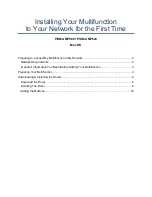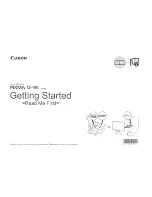
1
2
3
4
5
6
7
8
9
10
11
Back
Next
Previous
TOP
2-2
Before Using the
Machine
Document and Paper
Copying
Sending and Receiving (MF6595cx/
MF6595/MF6590 Only)
Printing and
Scanning
Network (MF6595cx/MF6595/
MF6590/MF6540 Only)
Remote UI (MF6595cx/MF6595/
MF6590/MF6540 Only)
System Settings
Maintenance
Troubleshooting
Appendix
Index
Table of Contents
Document Requirements
Platen Glass
ADF
Type
Plain paper
Thick documents
Photographs
Small documents (e.g.,
index cards)
Special types of paper
(e.g., tracing paper*
1
,
transparencies*
1
, etc.)
Books (Height: max.
3/4" (20 mm))
–
–
–
–
–
–
Plain paper (Multi-page
documents of the same
size, thickness and weight
or one page documents.)
Size
(W x L)
Max. 8 1/2" x 14"
(Max. 216 x 356 mm)
Max. 8 1/2" x 14"
(Max. 216 x 356 mm)
Min. 5 1/2" x 5"
(Min. 139.7 x 128 mm)
Weight
Max. 4.4 lb (2 kg)
13 to 34 lb bond (50 to
128 g/m
2
) (one-sided
documents)
13 to 28 lb bond (50 to
105 g/m
2
) (two-sided
documents)
Quantity
1 sheet
Max. 50 sheets*
2
(Max. 25 sheets for LGL
documents)
*
1
When copying transparent documents such as tracing paper
or transparencies, use a piece of plain white paper to cover the
document after placing it face-down on the platen glass.
*
2
21 lb bond (80 g/m
2
) paper
Do not place the document on the platen glass or in the ADF
until the glue, ink or correction fluid on the document is
completely dry.
To prevent document jams in the ADF, do not use any of the
following:
Wrinkled or creased paper
Carbon paper or carbon-backed paper
Curled or rolled paper
Coated paper
Torn paper
Onion skin or thin paper
Documents with staples or paper clips attached
Paper printed with a thermal transfer printer
Transparencies
●
●
–
–
–
–
–
–
–
–
–
















































